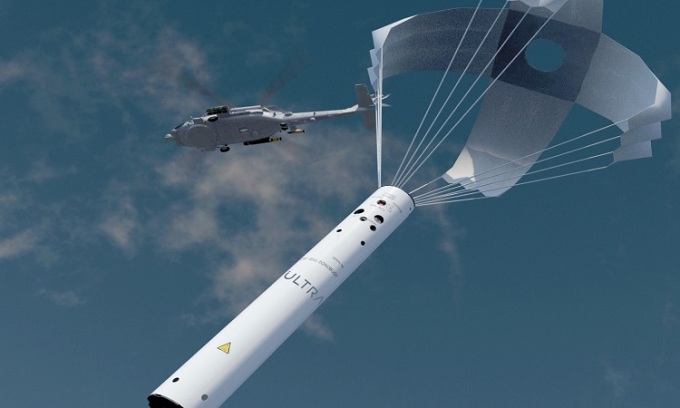Sonobuoys help searchers detect sounds emitted every 30 minutes, possibly made by passengers on the missing Titan submersible.

Illustration of an aircraft dropping sonobuoys. Photo: Naval News
US and Canadian authorities are searching for the OceanGate submersible Titan, which carried five people missing while touring the wreck of the Titanic. A loud noise was detected 30 minutes ago when a Canadian plane deployed a sonar device called a sonobuoy during the search, raising hopes that passengers on the Titan are still alive and trying to make noise through the hull.
While flying over the North Atlantic search area, the Canadian aircraft dropped a device called a sonobuoy, a crucial tool for underwater searches. Once dropped from the plane into the water, the buoys were lowered by parachutes. Once they reached the surface, authorities could deploy them at the required depth and maintain contact with the aircraft above.
In the water, the sonobuoy splits into two ends, one with a radio frequency transmitter that beams up to the surface. The other end has a series of microphones called underwater transducers that point toward the depths. Both ends are connected to a cable. Any sound detected by the transducers is transmitted through the cable to the radio frequency transmitter. The transmitter then transmits the signal to an aircraft, allowing rescuers to pinpoint the source of the sound thousands of meters below.
The way sonobuoys work is based on the principle of sonar, which is the use of sound waves to detect objects underwater. Sonobuoys work in two different ways, active and passive detection. Active detection involves sending out a “ping” into the surrounding area and listening for the echo. Passive detection involves listening for sounds made by propellers and machinery.
Search teams are primarily using passive detection, picking up sounds that might be caused by passengers banging on the submarine’s hull. Active detection is much more challenging around the Titanic wreckage because it is difficult to distinguish between the submersible and surrounding debris. A third type of sonobuoy is sometimes called a special-purpose sonobuoy because it provides additional environmental information such as water temperature or wave height.
Three sonobuoys were needed to pick up the sound so the experts could triangulate the submersible's location. Triangulation is often used by geologists to find earthquakes, allowing for more precise location by using sharp angles.
"The fact that the noise was heard every 30 minutes is a big clue. It's unlikely to be from another submersible, which only goes down to 900m. A surface propeller would make a continuous noise, so it's likely to be man-made. Sound travels far in water, which is both good and bad news. You still need three sonobuoys to triangulate the location. However, it's possible that the sound came from something else. Lack of oxygen is a key factor," said Dr Jamie Pringle, a PhD student in Geosciences at Keele University.
Sonobuoys were originally developed to detect German U-boats during World War II. Any underwater sound signals detected by the receiver, caused by a nearby U-boat, would be transmitted to the aircraft via radio transmitter. But today, sonobuoys are used for a variety of purposes, including search and rescue operations. They can map the location of plane crashes, shipwrecks or survivors at sea. Sonobuoys were used in 2014 in the search for the missing Malaysia Airlines flight MH370.
An Khang (According to Mail )
Source link






























![[Photo] Ready for the 2025 Fall Fair](https://vphoto.vietnam.vn/thumb/1200x675/vietnam/resource/IMAGE/2025/10/14/1760456672454_ndo_br_chi-9796-jpg.webp)










































![[Photo] General Secretary To Lam chairs the meeting of the Central Steering Committee on science, technology development, innovation and digital transformation](https://vphoto.vietnam.vn/thumb/402x226/vietnam/resource/IMAGE/2025/10/15/1760500443782_anh-man-hinh-2025-10-15-luc-10-52-47.png)


































Comment (0)